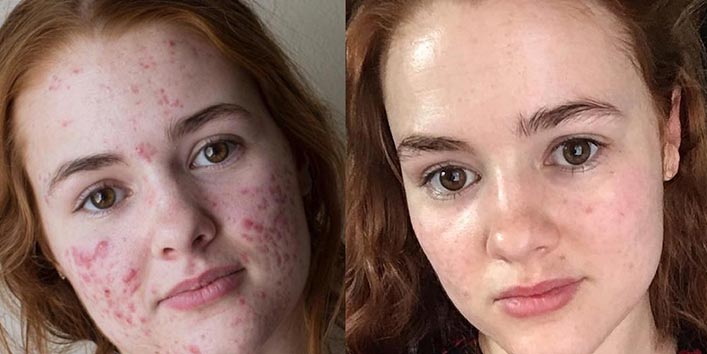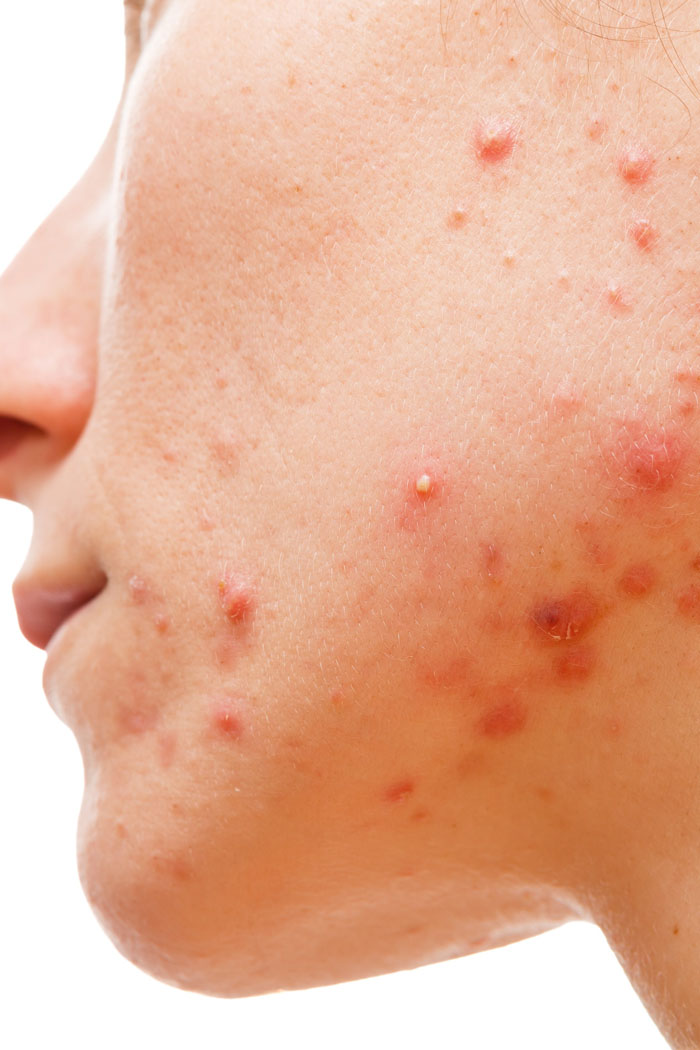Not a teenager anymore but still prone to getting acne which are stubborn and difficult to clear, then you must be suffering from Hormonal Acne.
These acnes do not respond well to typical topical acne treatments like Salicylic acid or pimple patches. Let’s get to know more about why these are different from regular ones and how to treat these acnes.
• Causes of Hormonal Acne • Signs that point to fact that you have hormonal acne • Treatment of hormonal acne
Causes of hormonal acne
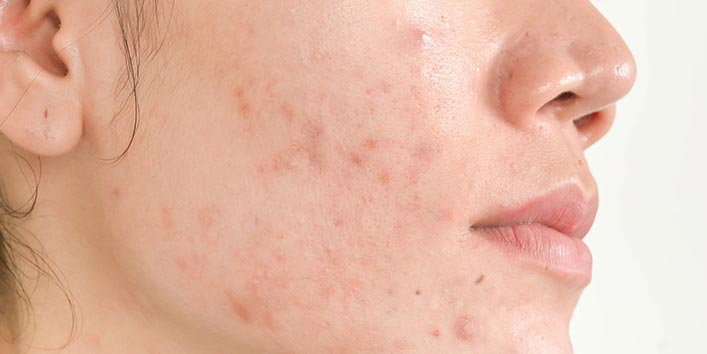 Here we are not talking about acne, instead we are talking about hormonal acne. So, the important term is hormonal. This awful type of acne is related to your hormones. The hormones responsible for this type of acne are progesterone and oestrogen. Fluctuations and imbalance in these hormones during the menstrual cycle can lead to this type of acne. When the the ratio of the hormones to each other can have an effect on the testosterone levels in women which can cause hormonal acne. Even cortisol or stress hormone can affect it.
Here we are not talking about acne, instead we are talking about hormonal acne. So, the important term is hormonal. This awful type of acne is related to your hormones. The hormones responsible for this type of acne are progesterone and oestrogen. Fluctuations and imbalance in these hormones during the menstrual cycle can lead to this type of acne. When the the ratio of the hormones to each other can have an effect on the testosterone levels in women which can cause hormonal acne. Even cortisol or stress hormone can affect it.
Hormonal fluctuations which could be menstrual or cyclical in women can increase the production of oil in the pores. This marks the beginning of hormonal acne but the exact cause is yet to be ascertained
Signs that point to fact that you have hormonal acne
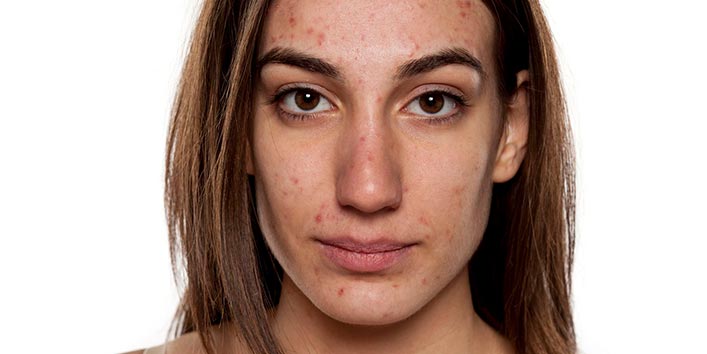 • Hormonal acne strikes after the teenage years: If you did not have acne as a teenager but are having it in the adult years and it is not improving with standard treatment, it is likely that you are having hormonal acne. These could be premenstrual flares with acne appearing on neck, jaw, face and chin. Menopause also results in acne breakouts. And hormonal acne is more common in women in their 20s since it the age for childbearing and resulting in hormonal fluctuations causing acne.
• Hormonal acne strikes after the teenage years: If you did not have acne as a teenager but are having it in the adult years and it is not improving with standard treatment, it is likely that you are having hormonal acne. These could be premenstrual flares with acne appearing on neck, jaw, face and chin. Menopause also results in acne breakouts. And hormonal acne is more common in women in their 20s since it the age for childbearing and resulting in hormonal fluctuations causing acne.
• Acne are more prominent around chin and jawline: It is most probably hormonal acne if you get them on your jawline and chin. The reason for these acnes is too much production of oil that clogs your pores. Excess of hormones stimulate the oil glands which are predominant in the chin area.
• These appear once a month: Hormonal acne follow a pattern just like women’s menstrual cycle. It even holds true in post-menopausal women since these women also experience fluctuations in the levels of progesterone and oestrogen. These acnes appear in the same place again every month. It could be enlargement of a pore by an earlier pimple. The pores open to trap the oil.
• You are stressed: Cortisol or stress hormone affects other hormones too. If you are too stressed you are setting yourself a stage to get hormonal acne flare.
• It is not whiteheads or blackheads: They may appear as whiteheads or blackheads. Black heads are open at the skin surface and they look black because of the effect of oxygen. Whiteheads are closed beneath the skin surface.
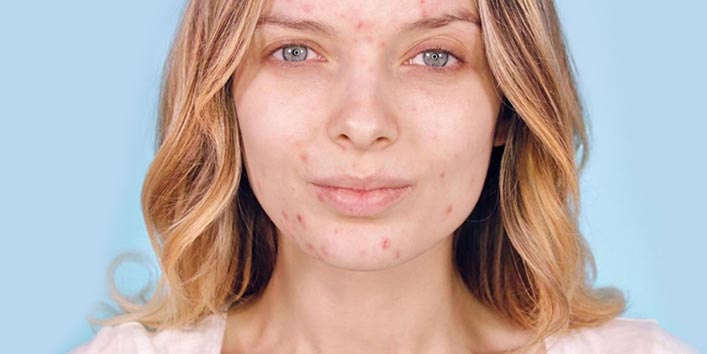 Hormonal acne can appear as:
Hormonal acne can appear as:
◦ Papules: small, raised red bumps appearing due to infection or inflammation of hair follicles. ◦ Pustules: small, red pus-filled pimples ◦ Cysts: large lumps present beneath the skin. They have pus and can be painful to touch
Treatment of Hormonal Acne
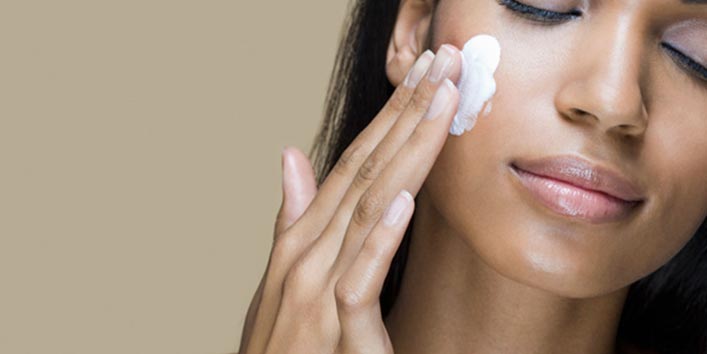 Before you start feeling powerless over hormonal acne, know that there are many methods to treat it. OTC treatments may not help so it is best to seek advice of a dermatologist. If you are experiencing deep cystic pimples, it could be indicative of something more serious like thyroid or abnormal hormonal levels. Here are some treatments:
Before you start feeling powerless over hormonal acne, know that there are many methods to treat it. OTC treatments may not help so it is best to seek advice of a dermatologist. If you are experiencing deep cystic pimples, it could be indicative of something more serious like thyroid or abnormal hormonal levels. Here are some treatments:
• Over the Counter Cleansers: For exfoliation, you can choose the one with salicylic acid or glycolic acid. Dermatologists generally recommend probiotic cleansers. They are really effective in controlling the microbiome or yeast and bacterial environment in skin. This maintains the pH levels for adequate penetration of strong prescription topical treatments. As per research the microbial strains in topical probiotics can enhance the protective mechanism of the skin, stop inflammation, inhibit breakouts.
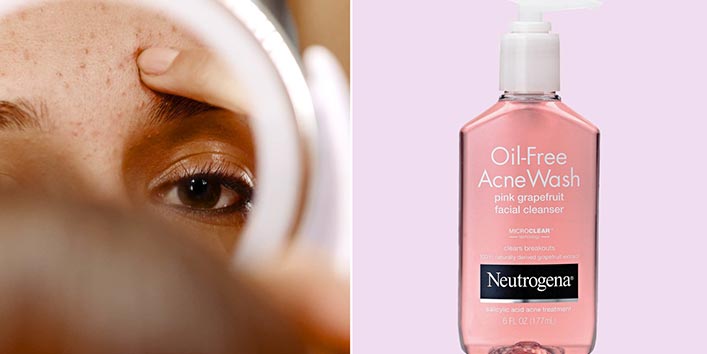 • Topical Retinoids: The first line of treatment of hormonal acne is topical retinoids. Retinoids help shed dead skin cells so that they won’t bind together and clog the pores. This treatment is generally preferred due to very few side effects. You could get retinol containing products over the counter but generally higher concentrations of retinoids with greater strength is required to fight hormonal acne.
• Topical Retinoids: The first line of treatment of hormonal acne is topical retinoids. Retinoids help shed dead skin cells so that they won’t bind together and clog the pores. This treatment is generally preferred due to very few side effects. You could get retinol containing products over the counter but generally higher concentrations of retinoids with greater strength is required to fight hormonal acne.
• Birth Control: If you have been on birth control and then went cold turkey you would see your skin having breakouts. It is a very normal thing. As a matter of fact, oral contraceptives can help clear acne in women. Some are even FDA approved. It is always advised to consult a doctor for the course of action to be followed for stabilization of hormones.
• Antiandrogen drugs: These helps reduce the excess androgens that result in hormonal acne. Antiandrogen drugs work by blocking the androgen receptors for reducing the effect of testosterone in the body. When administered in low doses, Spironolactone helps heal cystic acne and decrease the production of oil in the skin.
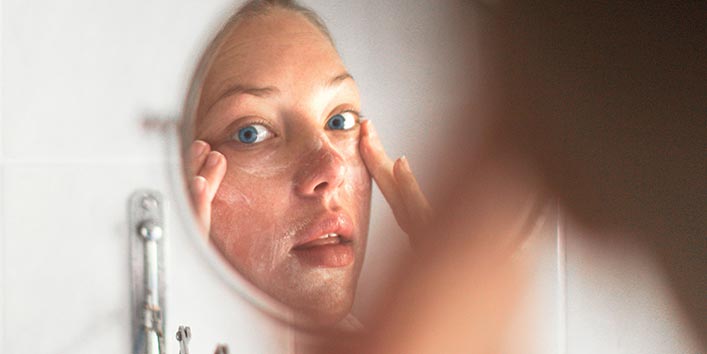 • Accutane: It is a stronger defence against breakouts. Accutane is basically oral vitamin A which reduces the release of oil by the oil glands and helps in skin renewal. It is used in the treatment of severe acne. It is very strong and has many side effects and is used only when other treatments have failed. You should seek advice of a doctor before using this especially of you are pregnant since it causes birth defects.
• Accutane: It is a stronger defence against breakouts. Accutane is basically oral vitamin A which reduces the release of oil by the oil glands and helps in skin renewal. It is used in the treatment of severe acne. It is very strong and has many side effects and is used only when other treatments have failed. You should seek advice of a doctor before using this especially of you are pregnant since it causes birth defects.
